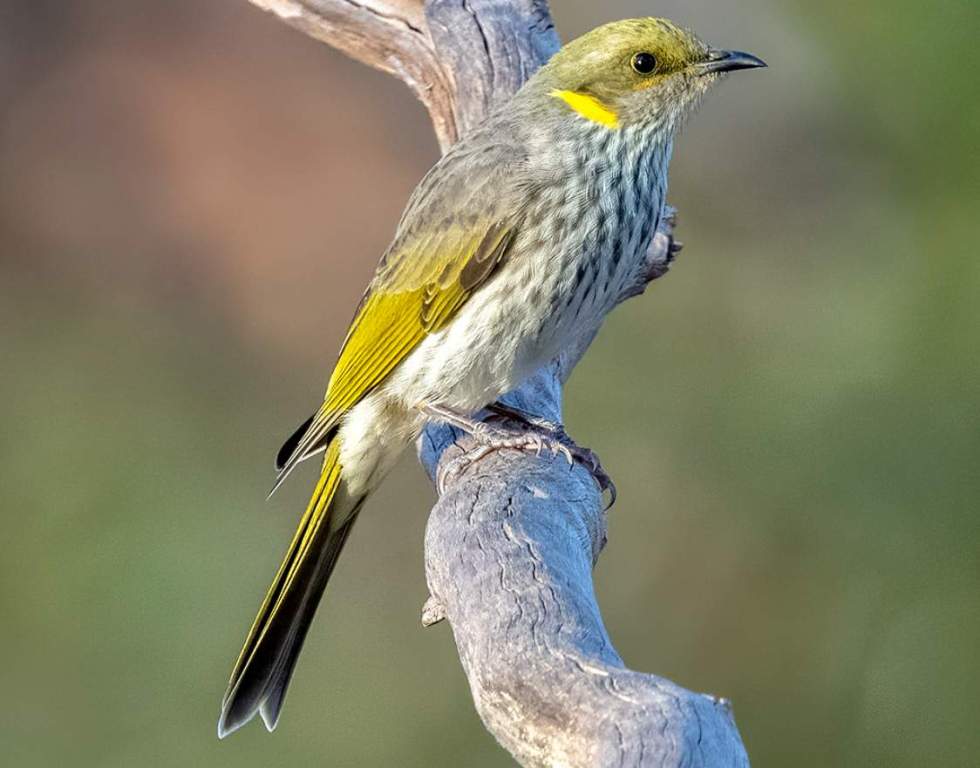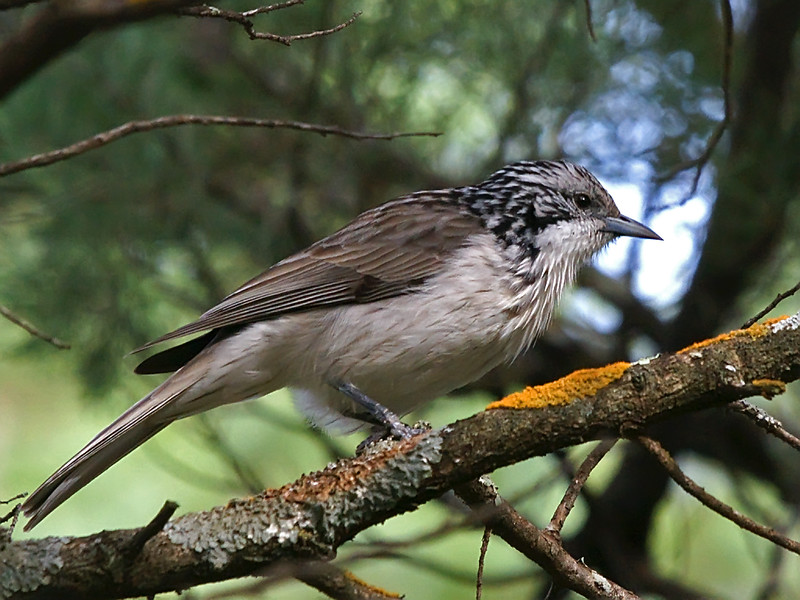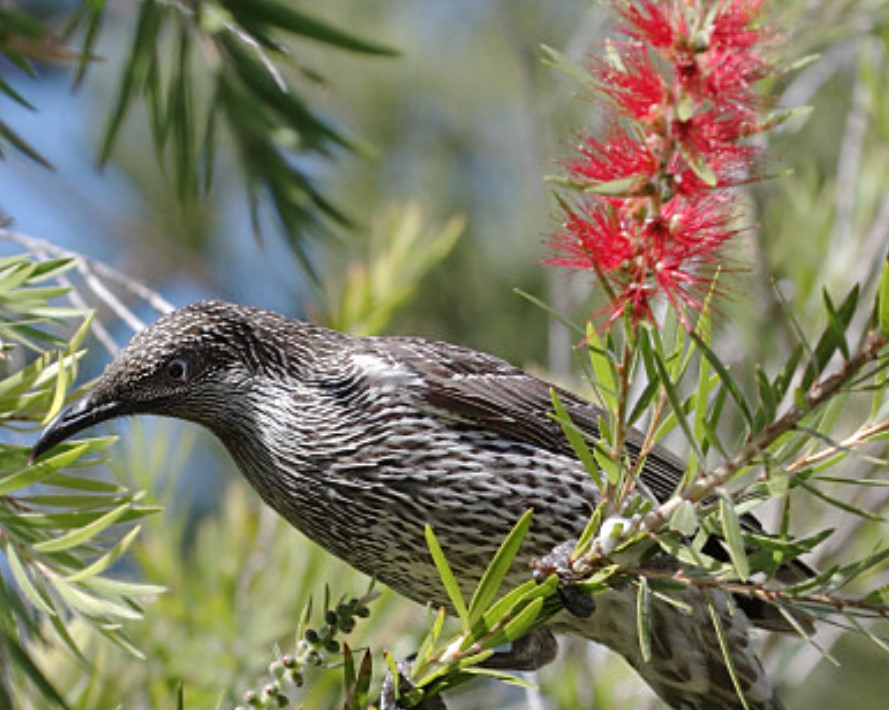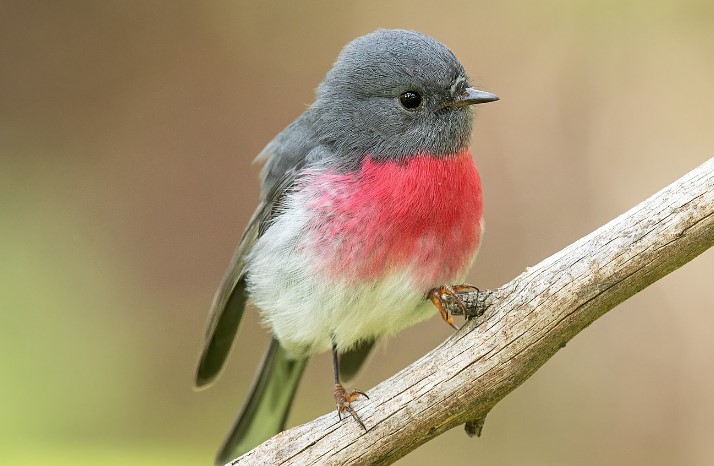Habitat: Similar in its feeding habits and behavior to white-plumed and gray-fronted honeyeaters. The yellow-plumed honeyeater (Ptilotula ornata) replaces those species in southern Australia’s wetter Mallee. It is almost entirely confined to Mallee, spreading into taller eucalypt woodland and open forest only in southern Western Australia. It enters barely the fringes of mulga scrub further inland. The yellow-plumed honeyeater is a sedentary bird, often in pairs or small colonial groups, rarely gathering in large aggregations or wandering more than locally to exploit flushes of blossoming eucalypts, mistletoes, and eremophilas for nectar.
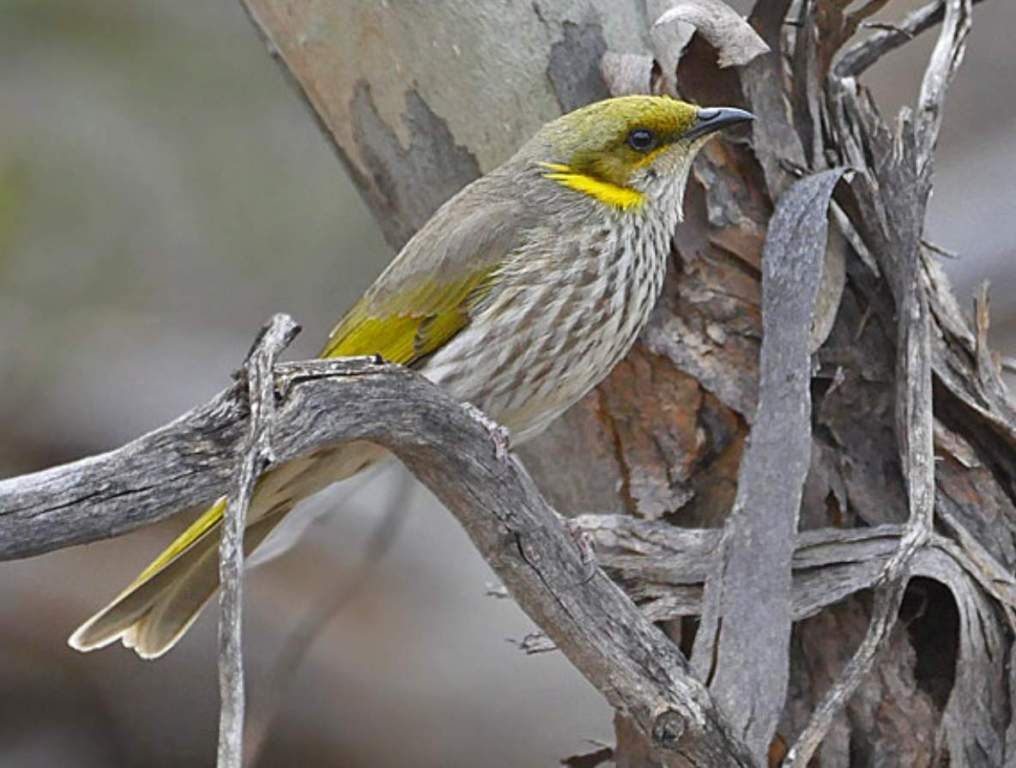
Diet: Most feeding is done in the upper foliage of Mallee, the birds hopping and gleaning over leaves, along branchlets, and under bark for insects and lerps. Flying insects are also caught in short sallies on the wings. Males advertise their feeding and breeding territories in song from vantage perches and with rapid trilled whistles in near vertical song flights above the malice.
Identification: Adults are alike. The upper parts, wings, and tail are dark green-grey. The face is dull green; the lores are dusky. There is a black streak below the ear, edged with a pointed yellow plume tuft. The underparts are white and heavily streaked with dark gray. The eyes are brown. The bill is black or white, becoming buff-like black eye rings out of breeding. The feet are gray-horned. The immature bird (as an adult) is dull. The bill base and eye-ring are buff.
Vocalizations: The yellow-plumed honeyeater repeats its call when in contact while feeding. The flat, machine-gun-like chirping is alarming. Moreover, the song is very rapid, rattling wi-te-te-te-te, falling slightly in pitch, and ringing, whistled chick-o-wee, from perches. During the flight of the climbing song, rapid, trillled whistles are repeated: hit-ho-ho, hit-ho-jo.
Nesting and breeding: Nesting and breeding occur in July–December. A nest is a neat cup shape made of grasses, bark strips, and cobwebs, usually suspended from a sapling. Various cuckoo species, including fan-tailed cuckoos, pallid cuckoos, Horsfield’s bronze cuckoos, and shining bronze cuckoos, parasitize yellow-plumed honeyeater nests.
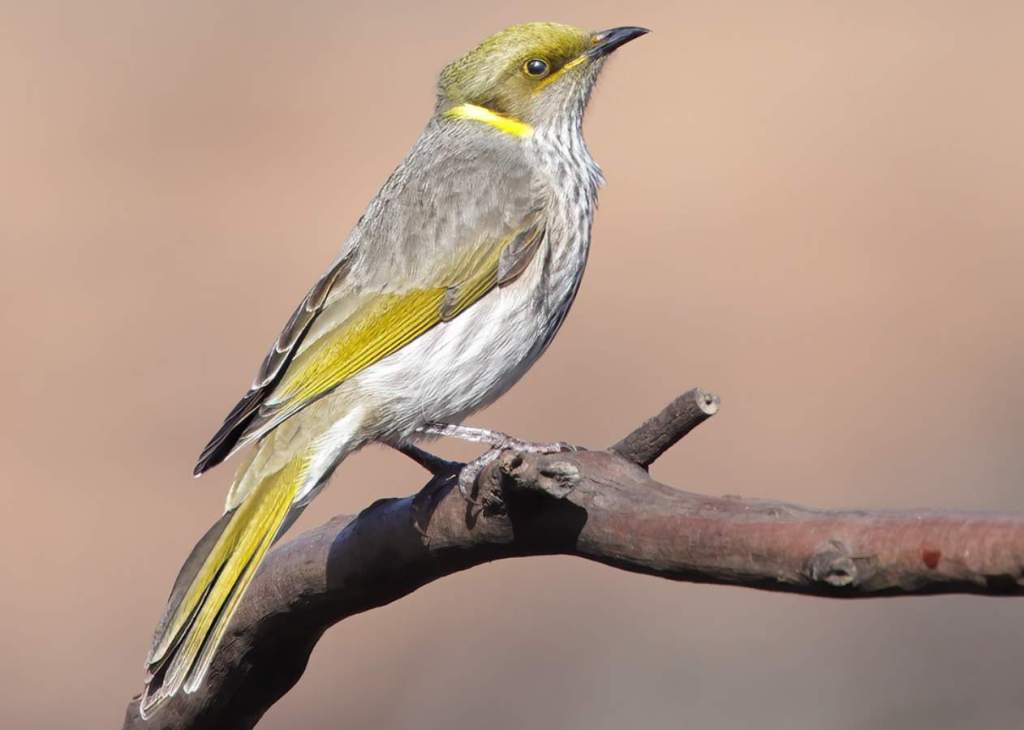
Eggs: The bird lays two or three eggs; salmon-pink with slight red-brown freckles, particularly at the larger end; oval, about 20 x 14 mm.
Distribution: Mallee and fringes of adjacent woodland across the southern mainland, east to Temora-West Wyalong, New South Wales.
Genus: In 2011, a molecular phylogenetic analysis showed that the yellow-plumed honeyeater was polyphyletic in the original genus Lichenostomus.
Alternative Name: The bird is also known as the Mallee Honeyeater.
Size: The yellow-plumed honeyeater is about 150–165 mm long.
Races: There are no races.
Status: Least Concern
Family: Meliphagidae.
Genus: Ptilotula
Order: Passeriformes
Read More: Purple-gaped Honeyeater (Lichenostomus cratitius)
